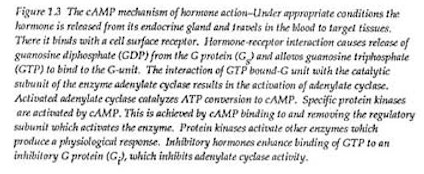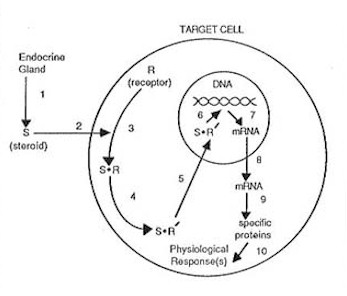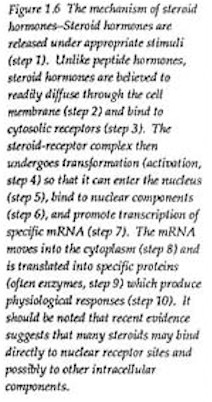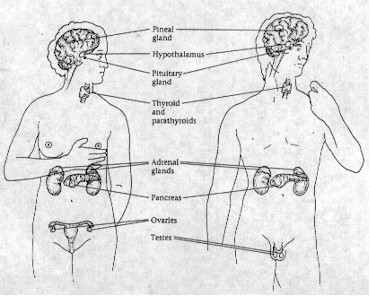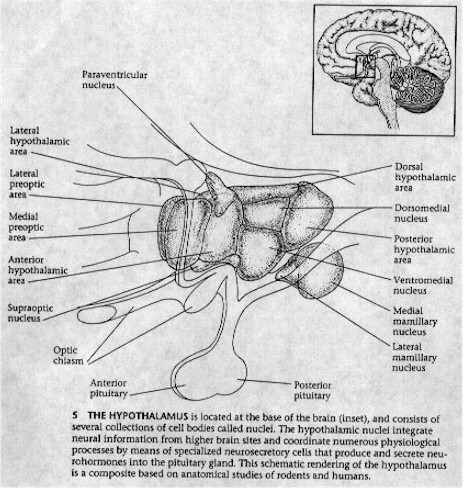|
Information about HH The Endocrine System |
|||||||||||||||||||||||||||||||
What is a An Expert Speaks
Out About HH The Role of
the Hypothalamus MRI Scans of Medical
Articles See a full description of
|
Definition: Any organic chemical that is secreted by a gland into the circulatory system and is transported to some target organ. The target may be either peripheral tissue (such as muscle or other gland) or brain. To affect behavior, hormone must eventually interact with brain. This interaction may be either direct (ie hormone binds with receptor on neuron) or indirect (hormone causes release of a second - or more - hormone which binds with brain receptors). There are four classes of hormones:
Note: generally only 1 class of hormone
produced by gland (exception: placenta and adrenal medulla). General characteristics of hormones Some features of hormones
Mechanism of hormone action
Detail of cAMP mechanism
Non cAMP mechanism is not well understood. Sometimes uses cGMP.
Detail of mRNA mechanism
Hormones vs Neurotransmitters Similarities: Differences: Neurotransmitters
Hypothalamus - a group of nuclei located below the thalamus - function of all the nuclei is not known but generally the hypothalamus is said to control eating/drinking, temperature and emotion.
Hypothalamo-hypophysial system Blood from superior hypophysial arteries which arise from internal carotids flow through a capillary plexus (loop) in median eminence to enter a sinusoidal network in infundibulum. From the sinusoids, blood passes into a second capillary plex in the anterior pituitary (adenohypophysis). This vascular network is called the hypothalamo-hypophysial portal system. Hypothalamic hormones are released into capillary network of median eminence and then transported to anterior pituitary where they control anterior pituitary hormone release. Several hypothalamic hormones have been isolated and they are called
releasing or inhibiting hormones because of their interactions with anterior pituitary
hormones: Other neurosecretions exist but have not been isolated and are therefore
called hypothalamic releasing factors: Generally, there is one type of cell for each hormone produced.
Classification is based on hw they stain:
Neurohypophysial system (posterior pituitary) Consists of supraoptic (SON) and paraventricular (PVN) nuclei of the hypothalamus and the posterior pituitary. Axons of SON and PVN project through median eminence and terminate on capillaries of posterior pituitary. SON produces vasopressin (also referred to as Antidiuretic hormone - ADH - because of its water etention role). PVN produces oxytocin.
Hypophysis (Pituitary gland) Referred to as master gland but it is apparent that it is highly regulated by the hypothalamus. Located in bony cavity called sella turcica. Anterior pituitary (adenohypophysis) is outgrowth of roof of mouth. Has few if any neural connections. But blood vessels in 2nd plexus are innervated by neurons so anterior pituitary release is under control of CNS. Posterior pituitary (neurohypophysis) is outgrowth of hypothalamus.
What is a Hypothalamic Hamartoma? |



